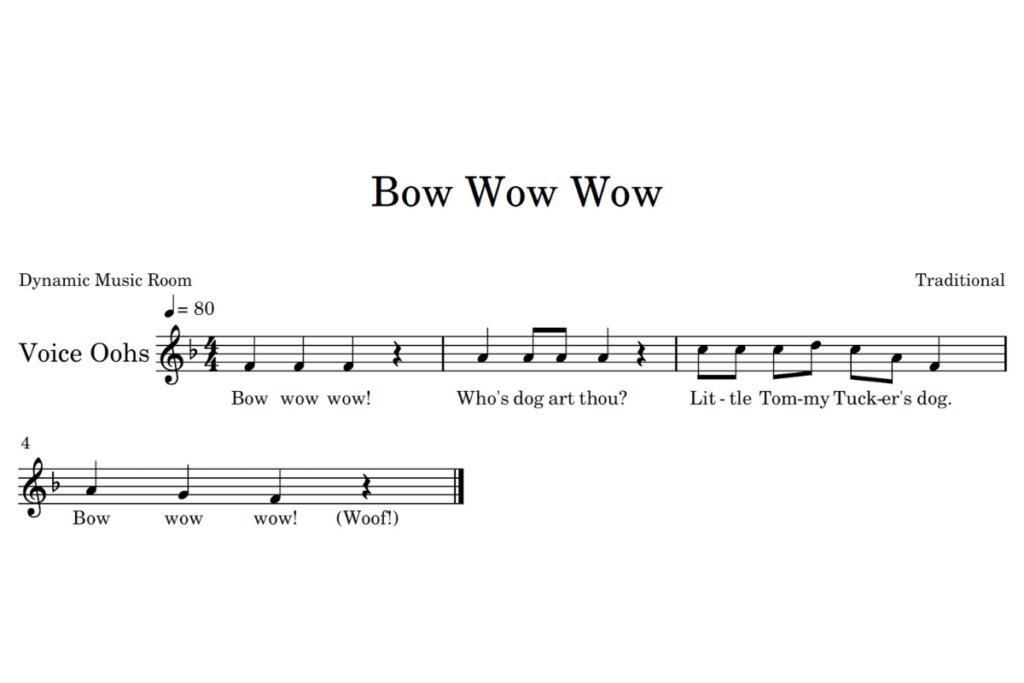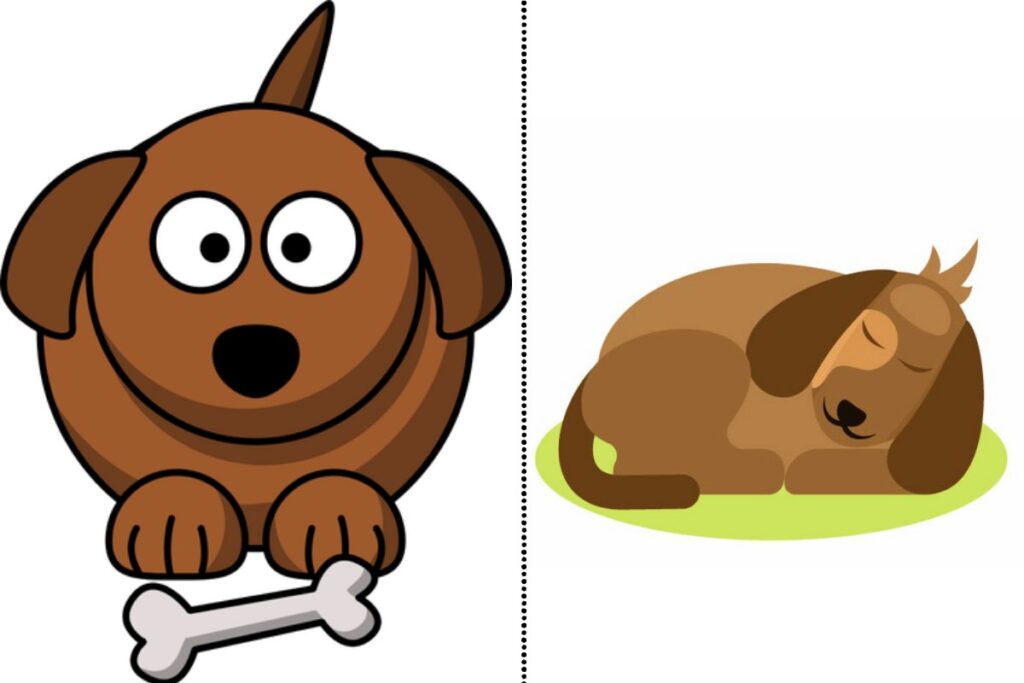Bow Wow Wow is one of those iconic folk songs everyone seems to know, teach, and enjoy.
With a simple, fun set of activities and a few key musical concepts to teach, this is one of those “money” songs I use over and over for several reasons.
Let’s look at the sheet music, the game(s), and a few sample lessons to use with this engaging folk song.

Save time with these 60 FREE Music Resources to use in your room right away!
Stop searching the whole internet to find good activities. I’ll help you cut to the chase with my favorite 60 FREE resources.
Table of Contents
Bow Wow Wow Sheet Music
Bow Wow Wow is a staple in my Kindergarten and First-grade classrooms for its small range and easy, engaging games.
But it’s stretchable to second grade, too, with the powerful Do-Mi-Sol highlights.
Sometimes, I’ll even bring it back in third grade as a way to review the Pentatonic scale.
Let’s look at the sheet music or notation, followed by a folk song analysis of what to look out for.

Where I First Heard It: American Folk Song Collection
Grade Level: Kindergarten-Second grade
Type: Simple movement or simple folk dance
Tonal Center: Do
Range: Major 6th
Tone Set: Drm sl
Rhythm Set: Quarter rest, eighth notes, quarter note
Form: a
Suggested Key: F Major
Pitch Focus: Do
Rhythm Focus: Quarter rest
Bow Wow Wow Lyrics
Bow wow wow!
Whose dog art thou?
Little Tommy Tucker’s dog
Bow wow wow!
Bow Wow Wow Game
I know of two games to do with this song.
The first one is a simple movement to match the song.
Students put their hands up on their heads like dog ears and flap them to the beat.
They put their ears down and lower their head on the quarter rest.
They make a barking sound and jump at the very end of the song.
On repeats, ask students for other ways to make a dog sound. With Kindergarten and First grade, it’s usually enough to keep them engaged for quite a few practices.
Here are some dog sounds my kids like to do:
- Woof
- Bark
- Howl
- Growl
- Small dog “woof woof”
- Yelp
The second game is more of a mini-folk dance.
Students need to be in a single circle and face a partner for this game.
They make the following moves matching the lyrics until they are back to their original partners.
| Lyrics | Moves |
|---|---|
| Bow wow wow | Stomp, stomp, stomp |
| Whose dog art thou? | One hand on hip, shake your finger at partner |
| Little Tommy Tucker’s dog | Take hands with partner and switch spots |
| Bow wow wow | Stomp, stomp, stomp |
| Woof! | Jump and turn around in place to face your new partner |
Three Sample Lessons For Bow Wow Wow
Bow Wow Wow’s musical concepts boil down to three main ideas:
- Steady beat
- Quarter rest
- Do (specifically Do-Mi-Sol)
Here are three lesson ideas for covering these concepts. Of course, there’s more out there than these three, but maybe they’ll give you some ideas for further teaching.
Steady Beat Activity
For steady beats, what better way is there to practice than playing some instruments or moving?
With the little activity, we do both.
Half the class should play the drums while half the class walks around like a dog. The key here is to focus on the movement matching the drums, which (hopefully) emphasize the steady beat.
Learning Quarter Rest
The quarter rests is very obvious in this song.
I like to print off small pictures of dogs awake and a dog asleep with this one.
For this learning activity, they get to arrange the pictures in any order they want as long as they use one sound picture and one rest.
Then, they have to clap it. If they can clap it, I let them play it on drums too.
Here are some free pictures I found for you to use.
Feel free to right-click and save.

Finding Do
Whether you’re working on Do in the Major Triad context (do-mi-sol) or the Mi-Re-Do one, this song is for you.
For practice in reading or matching pitches on the staff, I take the same dog pictures and print them off small.
Then, I have the students place them individually or in small groups on a printed staff.
Here are the steps I go through:
- You put a pitch pattern on a staff. The students have to match it.
- You sing or play a pattern. Students write it down. You show the right answer.
- Students make their own pattern and sing it for you.

